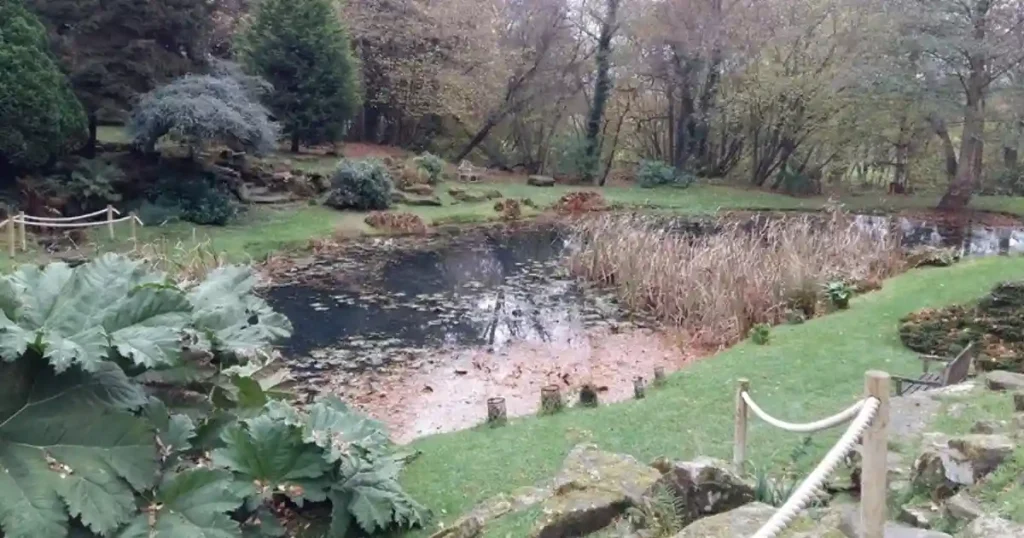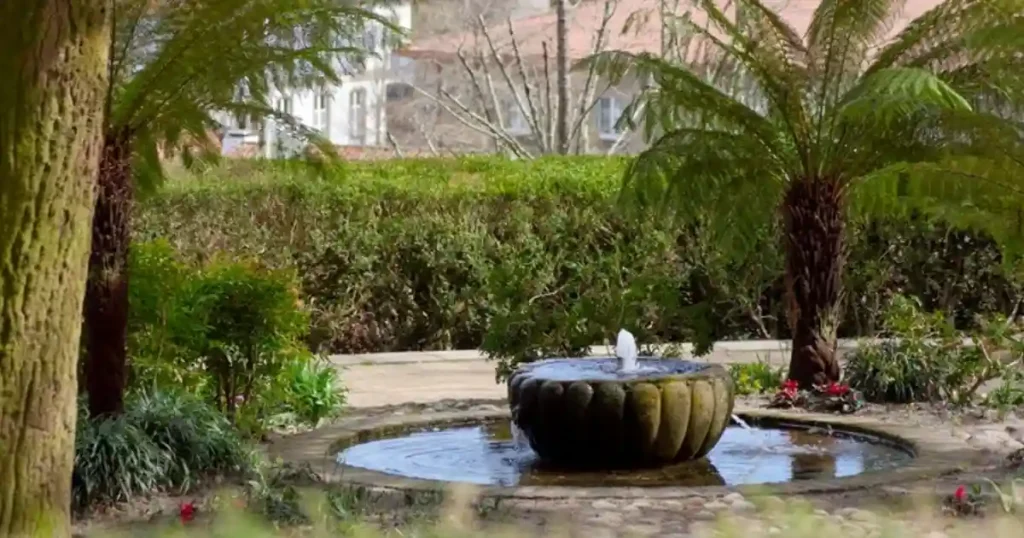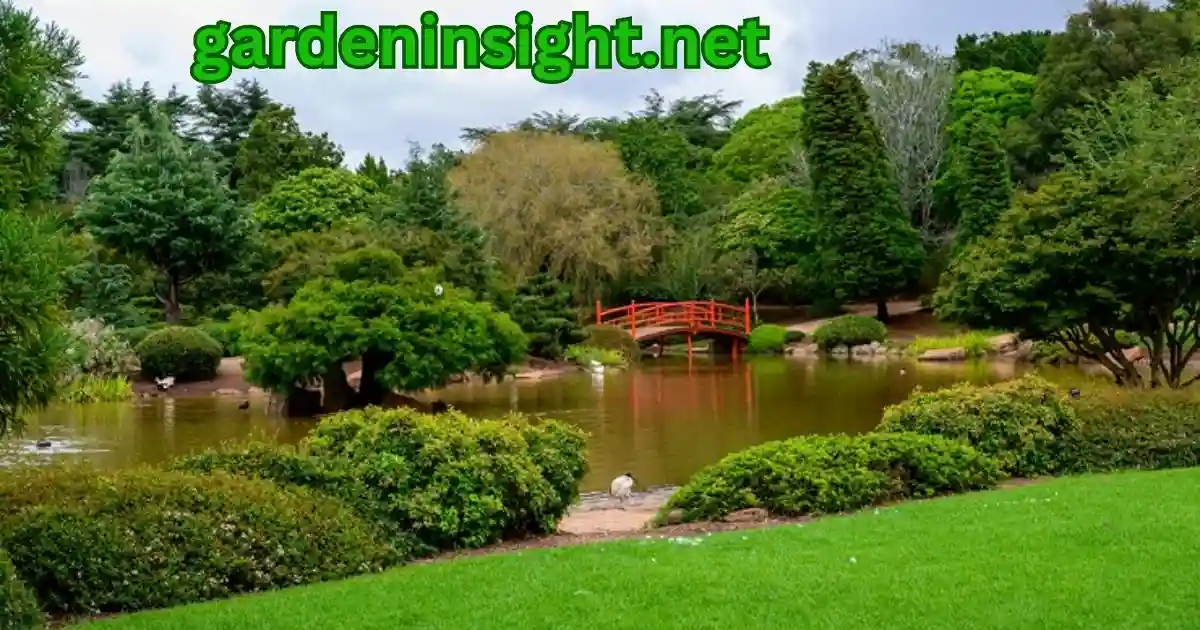Imagine stepping into your backyard and being greeted by the tranquil sound of water, the sight of colorful fish darting amongst lilies, and the gentle rustling of plants swaying in the breeze. A garden pond can transform your outdoor space into a serene oasis, providing a place to relax, connect with nature, and add beauty to your surroundings.
To build garden pond might seem like a daunting task, but with the right guidance and a bit of effort, it’s an achievable project that can bring years of enjoyment.
This guide will walk you through the process, offering step-by-step instructions, helpful tips, and creative ideas to help you create the pond of your dreams.
Planning Your Garden Pond

Before you start digging, it’s crucial to plan your pond carefully. Consider the following factors:
- Location: Choose a location that receives partial sunlight (around 6 hours a day) to support aquatic plants and prevent excessive algae growth. Avoid areas with overhanging trees, as falling leaves can create debris.
- Size and Shape: The size and shape of your pond depend on your available space and personal preferences. Consider the overall aesthetic of your garden and the types of plants and features you want to include.
- Depth: A pond with varying depths provides different habitats for plants and wildlife. Aim for a maximum depth of around 2 feet to accommodate fish and aquatic plants.
- Purpose: Will your pond be primarily for plants, fish, or a combination of both? Knowing the purpose will help you determine the necessary equipment and features.
Gathering Your Supplies
Once you have a plan in place, it’s time to gather the necessary supplies. Here’s a basic list:
| Item | Description |
|---|---|
| Pond Liner | A flexible sheet of material (usually PVC or EPDM rubber) that creates the waterproof barrier for your pond |
| Shovel | For digging the pond |
| Level | To ensure the pond edges are level |
| Underlayment | A protective layer placed under the liner to prevent punctures |
| Sand | To create a smooth base for the liner |
| Rocks and Gravel | For decoration and to create different depths |
| Aquatic Plants | To add beauty and oxygenate the water |
| Pond Pump (optional) | To circulate water and create waterfalls or water features |
| Filter (optional) | To keep the water clean and clear |
Build Garden Pond: Step-by-Step Guide
Now, let’s get building! Here’s a general outline of the process:
- Mark the Outline: Use a rope or hose to mark the desired shape and size of your pond on the ground.
- Start Digging: Begin digging the pond, creating shelves for plants at different depths.
- Prepare the Base: Remove any sharp rocks or debris and add a layer of sand to create a smooth surface.
- Lay the Underlayment: Place the underlayment over the entire pond area to protect the liner.
- Install the Pond Liner: Carefully lay the pond liner over the underlayment, ensuring it overlaps the edges. Smooth out any wrinkles.
- Secure the Edges: Secure the edges of the liner with rocks, gravel, or soil to prevent it from slipping.
- Fill with Water: Start filling the pond with water, adjusting the liner as needed to ensure it fits snugly.
- Add Plants and Features: Place aquatic plants in their designated shelves and add any desired features, such as rocks, waterfalls, or fountains.
- Install Equipment (optional): If using a pump or filter, install them according to the manufacturer’s instructions.
- Enjoy Your Pond!
How to Build Garden Pond with Waterfall

The sound of cascading water adds a magical touch to any garden pond. Here’s how to incorporate a waterfall into your design:
- Create an Elevated Area: Build up a mound of soil or rocks at one end of the pond to create the waterfall’s starting point.
- Install the Pump: Place a submersible pump in the pond and connect it to tubing that will carry water to the top of the waterfall.
- Arrange Rocks: Arrange rocks and stones to create a natural-looking cascade for the water to flow over.
- Conceal the Tubing: Hide the tubing with plants, rocks, or other decorative elements.
How to Build Garden Pond Step by Step
Building a garden pond is a multi-step process that requires careful planning and execution. Here’s a more detailed breakdown of the steps involved:
- Planning and Design: Determine the location, size, shape, and depth of your pond. Consider the purpose and desired features.
- Gathering Materials: Acquire the necessary supplies, including a pond liner, underlayment, shovel, level, rocks, gravel, plants, and optional equipment like a pump and filter.
- Excavation: Dig the pond according to your design, creating shelves for plants at different depths.
- Base Preparation: Remove any sharp objects and add a layer of sand to create a smooth base for the liner.
- Liner Installation: Carefully lay the pond liner, ensuring it overlaps the edges and is free of wrinkles.
- Edge Securing: Secure the edges of the liner with rocks, gravel, or soil.
- Filling and Planting: Fill the pond with water and add aquatic plants to their designated shelves.
- Feature Installation: Incorporate any desired features, such as rocks, waterfalls, or fountains.
- Equipment Setup: Install any optional equipment, such as a pump or filter.
- Maintenance: Regularly maintain the pond by removing debris, cleaning the filter, and monitoring water quality.
How to Build Garden Pond Above Ground
If you have limited space or prefer a raised pond, an above-ground option is a great alternative. Here’s how to build one:
- Choose a Container: Select a sturdy container, such as a raised garden bed, a stock tank, or a large planter.
- Prepare the Container: Ensure the container is watertight. You may need to seal any drainage holes.
- Add a Liner (optional): For added protection, you can add a pond liner to the container.
- Fill with Water: Fill the container with water.
- Add Plants and Features: Incorporate aquatic plants and any desired features, such as rocks or a small fountain.
How to Build Garden Pond Cheap
Building a garden pond doesn’t have to break the bank. Here are some tips for creating a budget-friendly pond:
- Use repurposed materials: Look for used containers, rocks, or plants to reduce costs.
- Choose a smaller size: A smaller pond requires less liner and fewer materials.
- DIY your features: Create your own waterfall or fountain using repurposed materials instead of buying pre-made ones.
- Source plants affordably: Look for plant cuttings or divisions from friends or neighbors.
How to Build Garden Pond with Liner
A pond liner is essential for creating a waterproof barrier. Here’s how to install one:
- Choose the Right Liner: Select a liner made of durable material, such as PVC or EPDM rubber. Calculate the size needed based on the pond’s dimensions.
- Prepare the Base: Ensure the pond base is smooth and free of sharp objects. Add a layer of underlayment for extra protection.
- Lay the Liner: Carefully lay the liner over the underlayment, ensuring it overlaps the edges.
- Secure the Edges: Weigh down the edges with rocks, gravel, or soil to prevent the liner from slipping.
How to Build Garden Pond with Water Feature
Water features add movement and visual interest to your pond. Here are some ideas:
- Waterfall: Create a cascading waterfall using rocks and a submersible pump.
- Fountain: Install a fountain to create a gentle spray of water.
- Bubbler: Add a bubbler to introduce oxygen and create a soothing sound.
Conclusion
To build garden pond is a rewarding project that can transform your backyard into a tranquil retreat. By following the steps outlined in this guide and considering your personal preferences, you can create a pond that complements your outdoor space and brings you years of enjoyment.
Whether you opt for a simple design or incorporate elaborate features, your garden pond will become a haven for relaxation and a source of beauty in your everyday life.
FAQs
Some of the frequently inquired questions about ways to build garden pond, are given as follow:
How deep should a garden pond be?
The ideal depth for a garden pond is around 2 feet to accommodate fish and aquatic plants. You can create shelves at varying depths to cater to different plant species.
What is the best material for a garden pond liner?
PVC and EPDM rubber are popular choices for pond liners due to their durability and flexibility.
Do I need a pump for my garden pond?
A pump is not essential for a basic pond, but it’s recommended if you want to add features like waterfalls or fountains. It also helps circulate the water and improve oxygenation.
How do I maintain my garden pond?
Regular maintenance includes removing debris, cleaning the filter (if applicable), and monitoring water quality. You may also need to add water occasionally to compensate for evaporation.
Can I build garden pond in a shady area?
While some shade is acceptable, it’s best to choose a location that receives at least partial sunlight to support plant growth and prevent excessive algae development.
